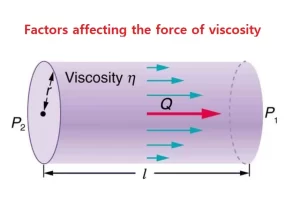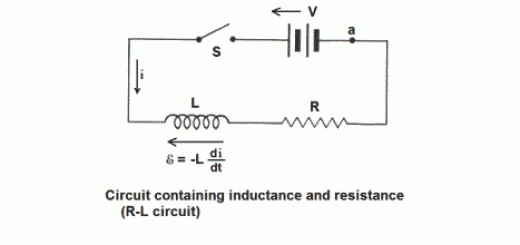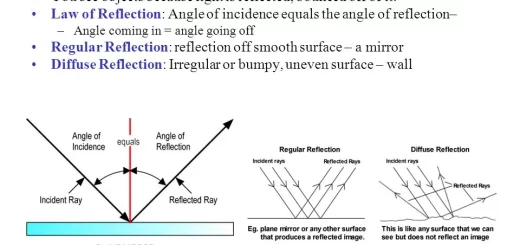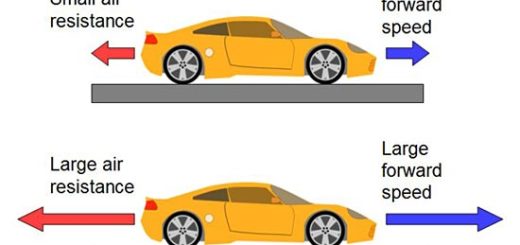Factors affecting the force of viscosity and Applications on the viscosity
Viscosity is the property that is responsible for the resistance or friction between the liquid layers and prevents the sliding of layers above each other, Some liquids like water and alcohol have a high ability to flow and their resistance for the motion of objects inside them is small, so, their viscosity is small, Some liquids like honey and glycerin have low ability to flow & its resistance for the motion of objects inside it is high, so, their viscosity is large.
Viscosity
When two similar funnels are hung on two holders and a beaker is placed below each, Alcohol is poured in one of them and glycerin in the other, speed of flow of alcohol is higher than that of glycerin, Which means the ability of alcohol to flow is higher than that of glycerin.
Two beakers one is filled with water and the other with honey, stir both of them using a spoon then take the spoon out, The spoon moves easier in water which means that the resistance of water to the spoon motion is less than that of the honey, Motion of the honey stops faster than of water after removing the spoon.
Two beakers one is filled with water and the other with glycerin, and a small metal ball is gently dropped in both beakers, Calculate the time required by the ball to reach the bottom of the beaker, The ball moves faster in water which means that glycerin resists the motion of the ball more than water.
Explaining the concept of viscosity
Imagine a quantity of fluid confined between two parallel plates, One of them is at rest, and the other moves with a velocity (v),
- The fluid layer adjacent to the plate at rest is at rest.
- The fluid layer adjacent to the moving plate is moving at the same velocity (v).
- Between the two plates, the fluid layers move with velocities ranging from zero at the plate at rest to ( v ) at the moving plate.
This is referring to :
- The existence of frictional forces between the two plane plates and the layer of liquid in contact with each of them due to the adhesive forces between the molecules of the solid plate and the molecules of the liquid adjacent to it, so, every layer of the liquid moves according to the motion of the plate adjacent to it .
- The existence of another force similar to the frictional force between each liquid layer and the layer above it which resists the sliding of the liquid layers above each other causing a relative change in velocity between each layer and the layer above it.
This type of flow is called the laminar flow or viscous flow.
Deduction of the viscosity coefficient
Consider two layers of liquid such that the perpendicular distance between them is (d), if force (f) acted on the upper layer of the liquid ( its area (A)) and moved it in a velocity (v), then in order that the moving layer keeps its velocity constant, then the tangent force between the two layers of the liquid during its motion (the force of viscosity) is:
Directly proportional to A, v : F ∝ A , F ∝ v
Inversely proportional to d: F ∝ 1/d
F ∝ Av/d ∴ F = constant (Av/d)
F = ηvs ( Av/d ) , ηvs = Fd / Av
Where ( ηvs ) is the viscosity coefficient.
Measuring unit of the viscosity coefficient is N.s /m² and it is equivalent to kg/m or J.s/m³.
The viscosity coefficient (ηvs) is the tangential force acting on the unit area to produce a unit change in velocity between two layers at unit distance apart from each other.
When the viscosity coefficient of a liquid = 0.01 kg/m.s, It means that the tangential force acting on the layer of the liquid of area 1 m² to produce a change in velocity 1 m/s between itself and the layer at 1 m distance apart from it = 0.01 N.
Factors affecting the force of viscosity
- The area of the moving layer is directly proportional.
- The difference in velocity between two layers of the liquid, Directional proportional.
- The viscosity coefficient for many different liquids or one liquid at different temperatures, Directly proportional.
- The perpendicular distance between the two layers, Inversely proportional.
Applications on the viscosity
Lubrication of machines: Highly viscous oils are used due to their strong adhesive forces with the machine parts, so, it does not seep away or sputter from the machine parts during motion, It is used to decrease the heat produced due to friction and it is used to protect the machine parts from corrosion and increasing its efficiency.
Saving fuel consumption in moving vehicles: In the medium and uniform velocities the air resistance resulting from air viscosity is directly proportional to the velocity of the moving body.
When the velocity exceeds a certain limit, then the air resistance is directly proportional to square the velocity not the velocity itself, leading to a noticeable increase in fuel consumption, Therefore, the expert driver does not exceed such a limit (80 – 90 km/h).
In medicine, blood precipitation rate test (The final velocity of falling red blood cells in plasma): When a ball undergoes a free fall in a liquid, it is under three forces which are its weight, Buoyancy (upthrust force) of the liquid, friction between the ball and the liquid due to viscosity.
It is found that such a ball attains a final velocity that increases as its radius increases, so, by taking a blood sample and measuring its precipitation rate, the size of red blood cells can be decided if normal or not.
For example: In the case of rheumatic fever and gout, red blood cells adhere together, and therefore, their volume and radius increase, and the sedimentation (precipitation) rate increases above normal, In the case of anemia, the precipitation rate is below normal, since the red cells break down, Hence, their volume and radius decrease.
Steady flow, Turbulent flow, and Applications on the continuity equation




